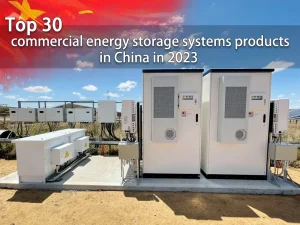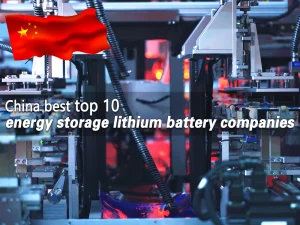Home » battery news » Large-scale energy storage – five technical routes for system integration
Large-scale energy storage - five technical routes for system integration
The development of energy storage has entered a new era. Large-scale energy storage is the key to the large-scale development of energy storage, and it is also a subdivision track with high certainty in the energy storage industry.
The following video will briefly and vividly introduce the working principle of the energy storage system.

Then, this article will introduce the division of large-scale energy storage systems, core technologies, integration routes, and energy storage system integrators.
Classification of large energy storage systems
According to the electrical structure, large-scale energy storage systems can be divided into:
Centralized: Low-voltage, high-power boost-type centralized grid-connected energy storage system. Multiple clusters of batteries are connected in parallel to the PCS. The PCS pursues high power and high efficiency. Currently, the 1500V solution is being promoted.
Distributed: low-voltage and low-power distributed boost grid-connected energy storage system, each cluster of batteries is linked to a PCS unit, and the PCS adopts a low-power, distributed arrangement.
Intelligent string type: Based on the distributed energy storage system architecture, innovative technologies such as battery module level energy optimization, battery single cluster energy control, digital intelligent management, and full modular design are adopted to achieve more efficient application of energy storage systems .
High-voltage cascaded high-power energy storage system: the single-cluster inverter of the battery is directly connected to the power grid with a voltage level above 6/10/35kv without a transformer. The capacity of a single unit can reach 5MW/10MWh.
Decentralized type: Using a DC to AC converter, also known as an inverter, is essential in battery storage system. Multiple branches are connected in parallel on the DC side and the battery clusters are isolated by adding DC/DC converters at the cluster outlets, which are pooled and connected to the DC side of the centralised PCS.
The core of energy storage technology
The core of the iteration of energy storage technology is to improve safety, reduce cost and improve efficiency.
Safety
The safety of energy storage power stations is the most concerned issue in the industry. Tracing back the cause of the safety problem of the energy storage power station can usually be attributed to the thermal runaway of the battery.
The causes of thermal runaway include mechanical abuse, electrical abuse, and thermal abuse. In order to avoid safety problems, it is necessary to strictly monitor the battery status to avoid the occurrence of thermal runaway incentives.
High efficiency
Cell consistency is a key factor affecting system efficiency. The consistency of the battery depends on the quality of the battery, the energy storage technology solution, and the working environment of the battery. Therefore, choosing best rechargeable batteries is very important for energy storage power stations.
The usable capacity of the battery cells connected in series can only reach the capacity of the weakest battery module, so that the capacity of other batteries cannot be fully utilized. In the design and operation scheme of the energy storage power station, the consistency of the battery should be improved as much as possible to improve the system efficiency.
Low cost
The cost of an energy storage system is related to initial investment and cycle life. The aging and decline of battery materials, charge and discharge system, battery operating temperature, and consistency of monomers will all affect the cycle life of the battery.
Comparison of energy storage integration technology routes
Centralized solution: 1500V instead of 1000V becomes the trend
With the development of centralized wind power plants and energy storage to larger capacity, DC high voltage has become the main technical solution to reduce costs and increase efficiency, and the energy storage system with DC side voltage increased to 1500V has gradually become a trend.
The power station with the same capacity needs less equipment, and the cost of equipment such as battery system, PCS, BMS and cables is greatly reduced.
According to estimates, compared with traditional solutions, the initial investment cost of the 1500V energy storage system is reduced by more than 10%.
Distributed solution
The distributed solution is also called multi-branch parallel connection on the AC side. At the same time, the control accuracy is changed from multiple battery clusters to a single battery cluster, and the control efficiency is higher.
In addition, through the decentralized control of battery clusters, the automatic calibration of the battery state of charge (SOC) can be realized, which significantly reduces the workload of operation and maintenance.
Intelligent string solution
Apply advanced ICT technologies such as AI and cloud BMS to internal short-circuit detection scenarios, apply AI to predict battery status, and adopt multi-model linkage intelligent temperature control strategies to ensure optimal charging and discharging status. Besides, the energy optimizer is used to realize battery module-level management.
High-voltage cascading scheme
Without the use of a transformer, the high-voltage cascaded energy storage system achieves a grid-connected voltage of 6-35kv. It provides various advantages, including greater security, uniformity, and efficiency.
The system does not use cells connected in parallel, making maintenance less expensive and simpler. Because the battery packs are not directly connected, SOC balance control is improved.
The technology functions without parallel cells/battery clusters, enhancing the energy storage device’s operating economy. The system does not require a step-up transformer, and the on-site system cycle efficiency exceeds 90%.
Decentralized type
The centralized decentralized solution is also called multi-branch parallel connection on the DC side. On the basis of the traditional centralized solution, a DC/DC converter is added at the outlet of the battery cluster to isolate the battery cluster.
In this way, DC arcing, circulating current, and capacity loss caused by DC parallel connection are avoided, and the safety of the system is greatly improved, thereby improving system efficiency. However, since the system needs to go through two stages of inversion, it has a negative impact on the system efficiency.
Energy storage system integrators
As the midstream link of the energy storage industry chain, energy storage system integrators are responsible for equipment providers and energy storage system owners, which has become the focus of most attention in the energy storage industry. The following will introduce the future focus of energy storage system integrators.
Focus on digital and personalized scene applications
Looking forward to the future, digitization and personalized scene applications have become the focus of the industry. Data capabilities are critical to supporting product development, technology iterations, and understanding energy and power characteristics of energy storage systems.
System integrators should be able to provide personalized solutions for different scenarios. This will help promote the development of the energy storage industry, and then formulate products that better meet the needs of the market and customers.
For example, some areas may need to deal with extreme climate conditions, so in the design of energy storage systems in these areas, integrators need to take into account special requirements such as anti-corrosion, waterproof and anti-freeze.
Improve the safety and life of energy storage power stations
In long-term operation, the reliability of energy storage power stations is inseparable from high-quality after-sales service.
Solving the problem of battery performance variance is an important responsibility of a good system integrator.Because the performance difference of the battery in different environments may lead to unsatisfactory income of the whole power station.
This requires integrators to optimize battery performance for different environments, improve system management, ensure safety and increase lifespan.
If it is not handled properly, the battery may experience problems such as overheating and potential safety hazards, which will affect the overall life of the battery.
In the future, the energy storage industry will further expand, and excellent system integrators should pay attention to the market and applications brought by new demands in advance, and actively develop corresponding technologies and solutions.
As the market scale continues to expand, energy storage system integrators should focus on innovation and continuous improvement to adapt to the changing market environment.




























